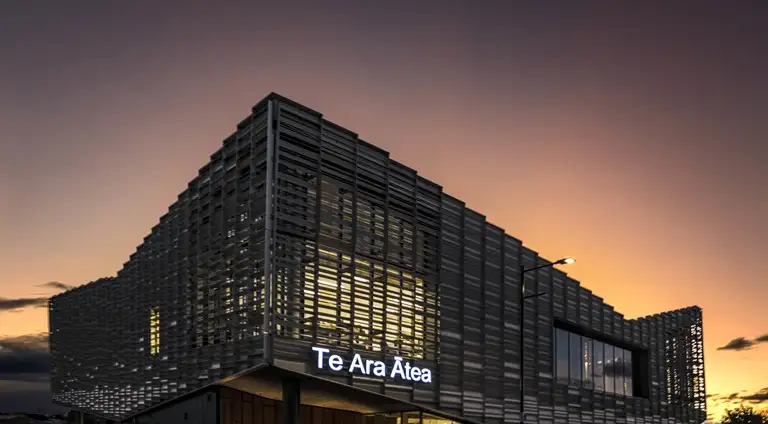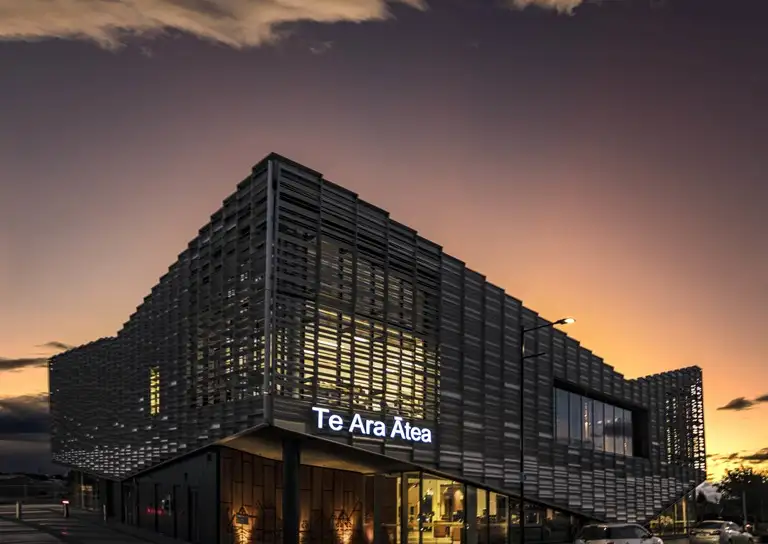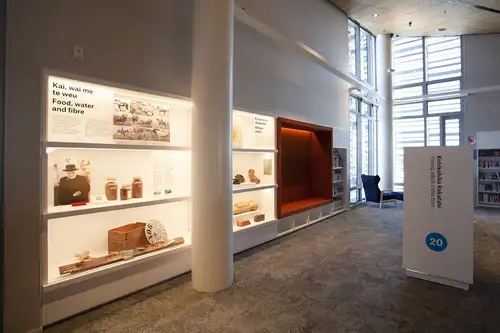Te Ara Ātea



Aotearoa has grown a lot over the past few years, but there’s one place that’s grown quickest of all. Canterbury’s Selwyn District.
Canterbury’s Selwyn District has almost doubled its population in less than ten years, jumping from 46,700 people in 2013 to almost 80,000 in 2023 – and growth continues to be steady.
That’s why Selwyn decided to develop its town centre of Rolleston in order to fully support the district’s growing community. Key to this plan was the creation of a new cultural and community hub. Council recognised that the former Rolleston library was getting too old and small, and they wanted to create a space where people could learn about their home's diverse cultures, histories, values and stories.
So, Te Ara Ātea was born. Opened in December 2021, it’s now the manawa, heart, of the new Rolleston town centre, and a true cultural and community hub. It’s a combination of library, gallery, heritage exhibition, meeting facility and café, and offers everything from performance spaces, workshops, studios, digital resources, social spaces to art, culture and heritage exhibitions.

A big part of the space’s success was the relationship between Council and mana whenua — one that was significantly strengthened throughout the course of this seven-year long project. Representatives from Te Taumutu Rūnanga and Ngāi Te Ruahikihiki ki Taumutu were involved throughout the entire development process, embedding and sharing strategic and cultural advice, kōrero, mātauranga, rangahau and tikanga.
As a result, the contribution of mana whenua is felt throughout Te Ara Ātea. It’s reflected in the space’s name, gifted to the community by Te Taumutu Runanga; in its prominent and celebrated use of te reo Maori; in the works from senior Ngāi Tahu artists that feature throughout Te Ara Ātea and its landscape; and in its showcase of tino taoka, the absolute treasures of the district. The most significant for mana whenua is the pounamu hei matau, greenstone pendant. Last seen in the district in 1938, this pounamu was returned to Selwyn on long term loan from Canterbury Museum — something only achieved through the joint effort of the Rūnanga and Council.
Another crucial relationship in the project was that between Council and Waitaha School, a local Rolleston specialist school for students with special needs. Council visited the knowledgeable team and students of Waitaha School numerous times to better understand their needs and wants. This collaboration led to inclusion of “Core Language” symbols for non-verbal communication throughout the space; one of the first fully accessible bathrooms in a public building in New Zealand; the selection of appropriate colours for furniture and surfaces; and an interactive and immersive “Sensory Garden” outside the building. Consequently, Te Ara Ātea is one of the most accessible public facilities in the region.
Comparing the first 12 months of Te Ara Ātea with the previous 12 months at the old Rolleston Library, there was a 91% increase in walk-in visitors, and a 125% increase in new members - proving itself to be a huge success from the get-go.
Te Ara Ātea shows what’s possible when a Council thinks in a creative, forward-thinking way about its rohe’s specific needs and wants, and does so through listening to — and forming strong relationships with — mana whenua and other key community groups. It also shows the potential for libraries to be reimagined as genuine community hubs that can offer people a whole range of learning, story-telling and connection opportunities — ones that greatly enhance the cultural wellbeing of a place and its people.